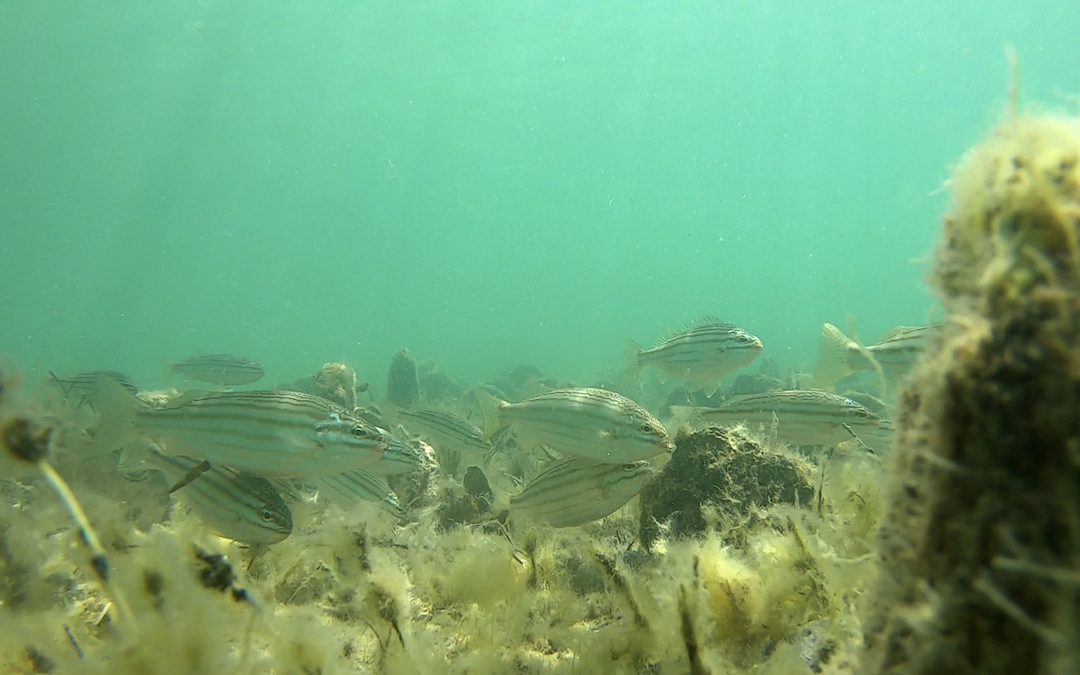A study of shellfish reefs has revealed the missing step for conserving Australia’s endangered fish species.
Led by Flinder’s University, the study is hoping for new insight into how shellfish reefs, made up of oysters, mussels and razor clams, contribute to marine biodiversity.
“This knowledge will aid in their conservation and restoration in Australia and globally,” says Bradley Martin, Flinders University PhD candidate, who led a review of global research into shellfish reefs.
“This synthesis of research clearly shows a lack of data on shellfish reef fishes.”

Artificial razor clam mimics © Georgia Tiller
What are shellfish reefs?
Marine NSW describes shellfish reefs as complex living structures created when oysters or other shellfish cluster on sedimented or rocky areas. These reefs buffer the impact of waves, and create stable conditions for other marine organisms.
Interestingly, shellfish are known as ecosystem engineers, due to their role in providing other flora and fauna with estuaries and coastlines in which they can develop and thrive.
Shellfish reefs are important locations for refuge and foraging, as well as serving as nurseries for a diverse range of fish communities. This includes species with significant socioeconomic value, such as whiting, snapper and bream in southern Australia. They also help to enhance water quality by providing critical filtration services.
Globally, human degradation has led to the loss of 85 percent of all oyster reefs, impacting local fish colonies and decreasing biodiversity.

A black spotted wrasse squid in an oyster reef © Brad Martin
Sadly, according to OceanWatch Australia, this country has lost 97 percent of its shellfish reefs since European settlement. This is due to factors such as industrialisation of coastal areas, harvesting of shells for resources, and water pollution.
Shellfish reef restoration projects help to rebuild degraded coastlines, providing fish with new habitats. In another recent Flinders University study, it was found that Aussie shellfish reefs generate an average fish production of 6,186 kilograms per hectare per year.
What does the study reveal?
The study, published in scientific journal Restoration Ecology, began by scouring over 110 international studies into shellfish reef fishes to understand common monitoring methods and find research gaps applicable to southern Australia.
Over the 116 peer-reviewed studies from 16 countries, only 23 covered reef-forming shellfish and 26 studied fish monitoring approaches. Around 60 percent assessed how fish adapted to shellfish reef restoration.

The team completing diving research near Glenelg, SA © Brad Martin
However, around 67 percent of all studies were carried out in the United States, and almost 80 percent focused solely on oyster reefs, leaving a large gap in global knowledge.
Currently, the Flinders University team is working to understand the best conservation and restoration practices for coastal ecosystems in southern Australia. They have found that dense patches of artificial razor clams encourage rapid biodiversity, drawing in gobies, shrimp and blue swimmer crabs.
“Our research efforts include understudied shellfish ecosystems and reef designs, including those characterised by native and introduced oysters, and razor clams (pinnids),” says Dr Ryan Baring, senior author of the new article.
“Past studies have used diverse fish monitoring methods, ranging from underwater video to various nets and traps, but they are under-reporting valuable monitoring information, such as the reef types or water parameters.
“By understanding these trends, we made recommendations to guide future monitoring approaches and identify key research gaps.”
It’s through this study of shellfish reefs and the trends in previous research that the team were able to determine the methods of restoration most effective for the Australian ecosystem. They made several recommendations for future research and conservation efforts in the hopes of protecting these precious marine structures.
To discover how a new diet for yellowtail kingfish could preserve wild stock, click here.

